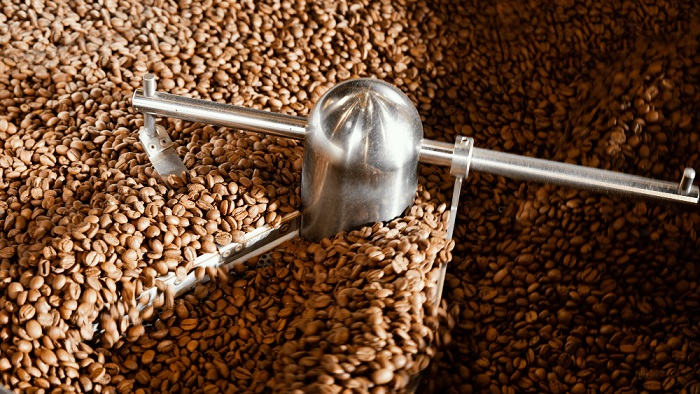In the world of coffee, few combinations are as beloved and nuanced as light roast Arabica. With its complex flavors, gentle acidity, and refined aroma, it’s become the go-to choice for coffee drinkers who appreciate more than just a caffeine fix. While darker roasts have long dominated store shelves and espresso bars, light roast Arabica is gaining loyal fans among those who crave a more authentic, transparent, and flavorful cup.
So, what makes this roast and bean pairing so special? Let’s dive into the reasons why light roast Arabica coffee has become a favorite for true coffee lovers around the globe.
The Unique Character of Arabica Beans
Arabica coffee beans, grown at higher elevations in regions such as Ethiopia, Colombia, Honduras, and Kenya, are known for their delicate flavor profile. Compared to the more bitter, robusta bean, Arabica offers a naturally sweeter, softer taste with notes that can range from fruity and floral to nutty and chocolatey. The plant itself is more fragile and requires specific conditions to thrive, which is why Arabica beans are often associated with premium quality and careful cultivation.
Arabica’s complex character becomes most evident when roasted lightly. The gentle roast allows the bean’s natural flavors to shine through, rather than being overshadowed by the smoky or bitter notes that develop with darker roasting.
Why Light Roast?
Roasting is where the magic happens it’s the process that transforms green coffee beans into the rich, aromatic brown beans we brew. A light roast involves shorter roasting times at lower temperatures, usually just long enough to reach the “first crack” a stage when the beans audibly pop as moisture inside them turns to steam.
Unlike dark roasts, which develop bolder and more uniform flavors due to the caramelization and carbonization of sugars, light roasts retain more of the bean’s original taste. For Arabica, that means subtle citrus acidity, layered fruit tones, tea-like clarity, and a smoother body. It’s a much more transparent roast, allowing coffee lovers to taste the influence of the region, altitude, soil, and processing method often referred to as “terroir,” a concept borrowed from the wine world.
Flavor Exploration in Every Cup
One of the main reasons light roast Arabica coffee appeals to seasoned drinkers is the incredible variety of flavor notes it offers. A cup of lightly roasted Ethiopian Arabica might have bright lemon and blueberry notes, while a Honduran light roast might feature caramel sweetness and hints of green apple. Coffee brewed from these beans is often described as vibrant, juicy, or even floral.
This variety opens up a world of tasting experiences. For many enthusiasts, drinking light roast Arabica isn’t just about caffeine it’s about exploration. With each new origin, harvest, or roast profile, there’s something new to discover. Much like wine tasting, coffee tasting becomes a sensory journey, where subtle differences matter and preferences become personal.
A Cleaner, More Refreshing Cup
Many coffee lovers who make the switch to light roast Arabica are surprised by how clean and refreshing the coffee tastes. Light roasts typically have higher acidity, but when paired with the smooth body of Arabica, the result is a crisp, bright cup that feels energizing and lively. There’s no heavy aftertaste or burnt flavor just a pure expression of the bean itself.
This clarity also makes light roast Arabica a favorite for pour-over brewing methods, such as the Chemex or V60, where precision and control help bring out the delicate notes of the coffee. When brewed properly, a light roast can feel almost tea-like gentle, layered, and deeply satisfying.
Sustainability and Quality Often Go Hand in Hand
Because Arabica plants are more sensitive and grow best in cooler, high-altitude environments, they’re often cultivated by small-scale farmers who prioritize quality over quantity. Many of these farms are located in biodiverse regions and use sustainable practices, including shade-grown cultivation, organic inputs, and hand-picking methods.
Coffee roasters who specialize in light roast Arabica often have close relationships with these producers, paying premium prices to support ethical sourcing and encourage better agricultural practices. So for many consumers, choosing light roast Arabica isn’t just about taste,, it’s also about supporting a more sustainable and equitable coffee industry.
Brewing Tips for the Best Cup
Light roast Arabica does require a bit more care to brew properly, but the results are well worth it. Here are a few tips to help you get the most out of your beans:
- Use fresh beans: Because light roasts are more delicate, stale or oxidized beans will lose their subtle notes quickly. Always buy whole beans and grind them just before brewing.
- Mind your grind: For pour-over or drip coffee, aim for a medium grind; for AeroPress or French press, adjust accordingly.
- Water matters: Use filtered water, ideally just off the boil (around 195–205°F), to avoid dulling the flavor.
- Try manual methods: Brewing methods like pour-over or siphon allow for more control and better flavor clarity than automatic drip machines.
Experimenting with ratios, grind size, and timing can help you dial in a cup that suits your personal taste. The beauty of light roast Arabica is that it invites experimentation and rewards attention to detail.
A Rising Star Among Coffee Enthusiasts
Light roast Arabica coffee isn’t just a trend,, it’s a reflection of a broader shift in coffee culture. As consumers become more curious, informed, and conscious of where their coffee comes from, there’s a growing appreciation for beans that offer transparency, both in terms of flavor and ethics.
For the true coffee lover, the appeal of light roast Arabica lies in its honesty. It doesn’t hide behind roast profiles or additives. It celebrates what’s already there,, the natural beauty of the bean, shaped by soil, sun, and careful hands. That kind of coffee doesn’t just wake you up,, it makes you slow down and savor.
